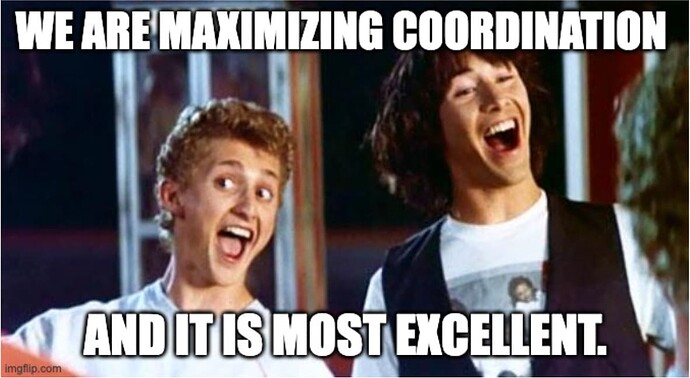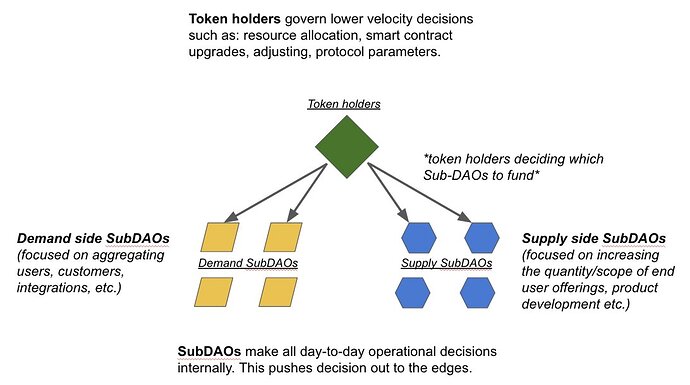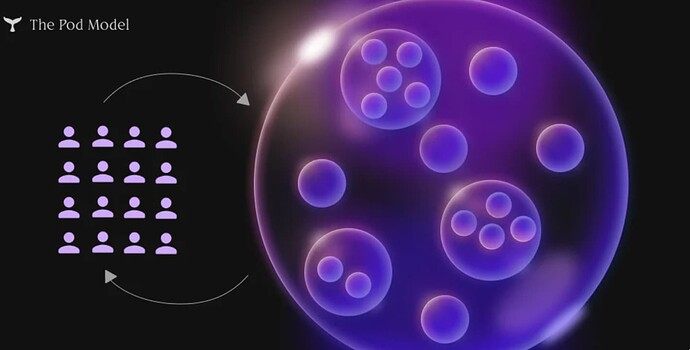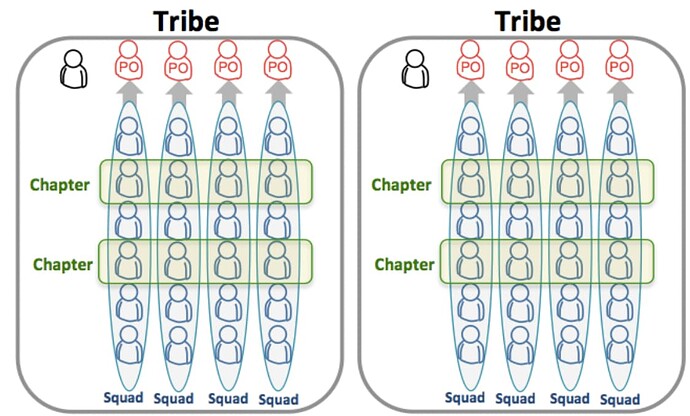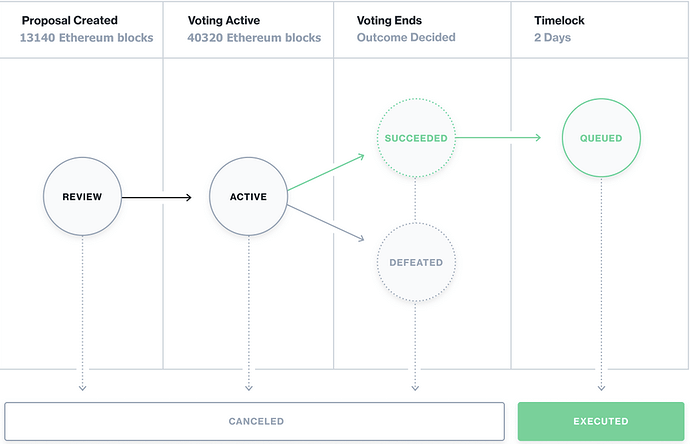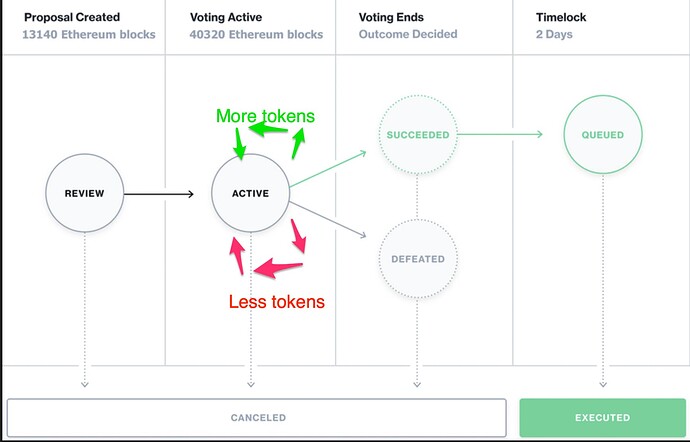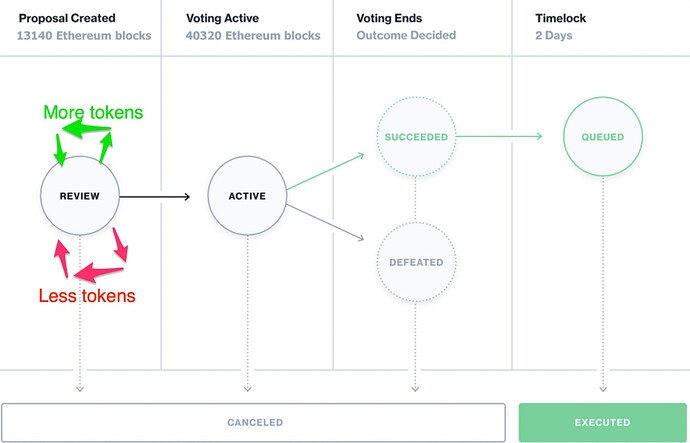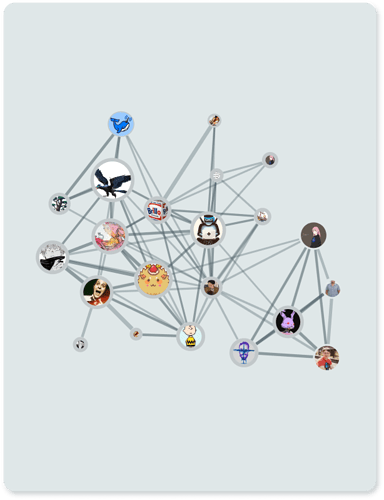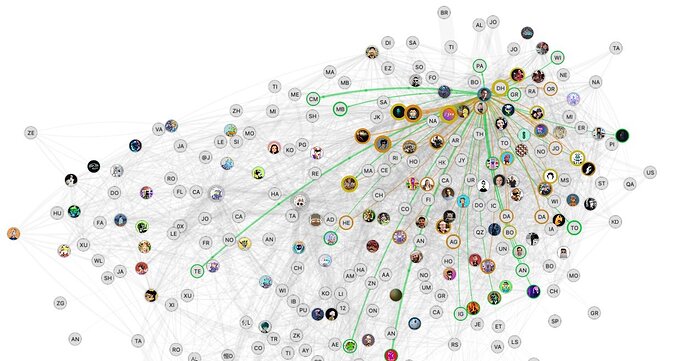As it is S14 budgeting season, I have been thinking a bit about the DAO’s steward governance surface area. Specifically:
- Workstreams have very large budgets that are hard to disambiguate which part of a workstream is being effective and which isn’t. For example, if the Operations crew in the DAO Ops workstream is not doing well, as a steward I can advocate to change that budget, but while we debate another sub-workstream is left in limbo with their fate tied to whole proposal.
- Workstreams proposals are all-or-nothing, there is no forkability.
- Sometimes a Y/N vote is not high enough resolution to convey signal, at the voting stage, about a workstream proposal.
- Theres a few patterns in workstream proposals that I think lead to unnecessary miscommunications or misalignments…
- The governance proposals system does not encourage enough bottoms-up emergence and does not favor small asks.
- not enough sharing of context/skills between workstreams
As I have been reading budget proposals & pondering these problems, I have been doing market research on how other DAOs organize their work - in some cases mitigating these issues.
I want to jot down a few architectures that are on the market which could be a way of thinking about refactoring the way work is organized here for increased visibility/feedback from the stewards.
Some of these architectures allow the ability to create more granular, or high resolution, feedback mechanisms for stewards/workstreams. Others allow scaling much closer to Maximum Coordination ![]() .
.
Here they are:
1. Thin Workstreams
This is from a proposal by @kyle entitled [Discussion] A hypothesis: Thin workstreams lead to better outcomes , he proposes breaking out the workstreams that exist into thinner workstreams. From @kyle’s post:
- DAO Ops has two potential sub-workstreams: community experience and operations
- FDD has three potential sub-workstreams: sybil, ground control, Grants Investigation Agency
- dGitcoin has two named sub-workstreams: dCompass and dGrants
- MSC has two (likely more) sub-workstreams: prototypes and products
- MMM has potentially four sub-workstreams: marketing, in-person events, Merch, Design/Memes
The idea is that having more workstreams would make it easier to
- avoid cliques culturally
- do onboarding into smaller workstreams
- disambiguate business units that are performant form their bundled peers
- keep governance proposals more small & manageable
Read more in @kyle 's post here.
2. Supply and demand Sub DAOs
This is an architecture by @pet3rpan that is described in this tweet thread:
https://twitter.com/pet3rpan_/status/1505977368099233793
https://twitter.com/pet3rpan_/status/1505977369407856646
Peter than continues to visually lay out this architecture:
https://twitter.com/pet3rpan_/status/1505996607929544710
What I think is neat about this is how organically similar it is to the thin workstream proposal above, though in this scenario each of the sub-DAOs competes with each other.
Imagine a world where MMM is not just one workstream, but is many demand subDAOs. MMM also competes agains a MMM-black in order to effectively market Gitcoin. Maybe each one has different specialties, eg. MMM is good at memes + swag, MMM-black is good at lore, and MMM-purple ends up being really good at documenting customer case studies.
Read more in Peter’s post here.
3. Orca Pods
Orca Pods are:
Pods are small working groups, usually centered around one expertise. In place of—or in addition to—one massive, centralized DAO treasury, each pod has its own multi-sig wallet that is controlled by the pod members. So pods can be thought of as mini-DAOs within a larger DAO.
In the image above, the circles represent pods, each with a handful of members and its own multi-sig wallet. The people at the bottom are stakeholders that do not yet have membership to a pod, for example governance token holders or users. To gain membership to a pod, the claimant must meet a set of rules—maybe they have to hold a certain amount of an ERC-20 asset or perhaps they must be voted on to a whitelist of candidates for membership. A future could even exist where membership hinges on a custom reputation system. These restrictions can be almost anything and should be formed around the gravity of the pod’s responsibilities. Membership can also be slashed at any time if the member fails to comply with membership rules. In other words, pods can grow, shrink and extend to the needs of the DAO.
What I think is cool about Pods is how they scale. From the post above:
DAO of one pod can easily add another pod when it becomes large enough, and it can continue to add pods as it grows. Any hierarchies that form in this process are localized, deliberate and impermanent. The DAO just grows organically from day one.
Learn more about Orca Pods here.
An Aside: Problems with the workstream model, sub DAO model, and Pod model.
One problem I see with the above model is that there is a lack of prenegotiated terms for governance rights if the workstream decides to become a sub DAO (or Pod) that is independent of the main DAO.
We’ve seen this with KERNEL, and dCompass/FDD are flirting with creating their own DAOs now.
In that scenario that an independent side DAO is created, how does the primary DAO get governance rights in return for their tokens being used to launch the Pod or side DAO? What terms are fair? When are they decided and by whom?
- Right now there is no mutual understanding that there should be a correlation between the GTC governance rights that GitcoinDAO gives to these workstreams to get them off the ground + the eventual governance rights of their independently governed project that GitcoinDAO gets back.
- This incentivizes the workstreams to keep requesting more GTC ad infinitum from GitcoinDAO. I would venture to say that if a workstream consumes more GTC, it should give up more governance rights in its eventual departure (or be shut down if its just not working).
- Not having this understood upfront increases the risk of misunderstandings + hurt feelings down the road.
With the workstream model, sub DAO model, and Pod model, a set of standard terms that are fair to both parties is needed in case of eventual independence. I hope to see the PGF workstream spearhead these negotiations in the future
4. Conviction Voting
There has been some action lately in Moonshot Collective about Conviction Voting, with a proposed tool to do CV as part of their S14 budget. I think this is deeply exciting because using Conviction voting, proposals can “charge up” over time, allowing smaller proposals to require a smaller support base, and larger proposals require a larger support base.

This allows DAO worksterams to evolve more emergently, they can “charge up” as people gain more conviction in their execution.

CV allows workstream creation to become more emergent. I imagine a world where dozens of new mini-workstreams could emerge from the promordial soup of Governance as stewards organically get more conviction on their ability to deliver.
I believe this emergence would encourage more cross-workstream collaboration. As members of different areas of the DAO discover they can request budget together in a lightweight way, that will create more collaboration among them.
Learn more about conviction voting here.
5. Mutual Grants
This is an idea by @ceresstation to align Gitcoin with groups external to GitcoinDAO (but with shared goals or values): Constructing a Mutual Grants Committee
From his post:
PGF has been pursuing small scale mutual grant agreements as opportunities emerge. Mutual grants as the name suggests are reciprocal grants of tokens for shared governance, with partners that are committed to working with Gitcoin via aqueducts, side rounds, or, more broadly, shared public goods related missions.
Mutual Grants allow GitcoinDAO to signal to the market that they are aligned with other ecosystem entities - mostly DAOs - towards shared goals.
I think that in a world of Practical Pluralism, that Mutual Grants are a really cool way of increasing coordination across the ecosystem.
Learn more about Mutual Grants here.
6. Scaled Agile
This one is a bit web2, but I think there is some good ideas in it: Scaled Agile
The things I think are interesting primitives are
- The basic unit of development at Spotify is the Squad. A Squad is similar to a Scrum team, and is designed to feel like a mini-startup. They sit together, and they have all the skills and tools needed to design, develop, test, and release to production. They are a self-organizing team and decide their own way of working – some use Scrum sprints, some use Kanban, some use a mix of these approaches.
- The chapter is your small family of people having similar skills and working within the same general competency area, within the same tribe.
- A Guild is a more organic and wide-reaching “community of interest”, a group of people that want to share knowledge, tools, code, and practices. Chapters are always local to a Tribe, while a guild usually cuts across the whole organization. Some examples are: the web technology guild, the tester guild, the agile coach guild, etc
- A tribe is a collection of squads that work in related areas – such as the music player, or backend infrastructure.
Read more about Scaled Agile here.
7. A higher fidelity steward voting in Gitcoin’s governance process
This is GitcoinDAO’s existing governance process:
One thing that I think is an extremely low hanging fruit improvement to this is to allow stewards to vote in more fidelity than just binary yes or no.
If a workstream is requesting 50k tokens, and the steward consensus is that they are doing a good enough job to receive 25k tokens for their work, they should be able to input that information into the governance system. Such a voting flow could be enabled by extending the current vote options beyond just yes or no to also allow voting for an option entitled “yes but with up to X less/more tokens”
Such a governance process would look like this:
or this
If you think this is a good idea, feel free to comment on the Governance process and say so!
8. CoordinAPE
CoordinAPE is a tool to scale your community with tools to reward contributors, incentivize participation and manage resources.
Basically CoordinAPE allows DAOs to vote on who is providing the most value, thereby measuring who the value creators are.
From there, tokens can be distributed, on a regular interval - say monthly. These tokens are distributed according to the value creation in the DAO.
Whats nice about this model is it scales up to 100s of contributors. And it’s completely bottoms-up.
CoordinAPE allows collaboration to become more emergent. Image a world where dozens of new mini-projects or guilds could emerge from the promordial soup of the DAO as contributors get to signal who is providing the most value.
I believe this emergence would encourage more cross-workstream collaboration. As members of different areas of the DAO discover they can earn budget in a workstream agnostic way, that will create more collaboration among them.
Read more about CoordinAPE here.
Mix & Match 
What I think is fun about the ideas above is how you can mix and match them. Some obvious ones to me are:
- As a workstream lead, I might decide to break my workstream into 3 thin-workstreams, each of which are structured as a supply or demo sub-DAO.
- I may decide to use conviction voting to form a guild of other public speakers at GitcoinDAO.
- As a workstream lead, I may decide to scale my own workstream with Orca Pods, with pre-negotiated Mutual Grants back to the workstream/Pod.
Feedback welcome
I hope that this post created more awareness of different organizational methodologies out there. Hopefully having a shared vocabulary of these primitives will create more understanding of what’s possible as we go from season to season.
To be clear, these are just ideas. None of these ideas have been ratified as things GitcoinDAO needs to do. To become legitimate experiments that GitcoinDAO is working with, the stewards and/or CSDO would need to ratify these through their respective governance processes.
I’d love if I missed an organizational paradigm, if you’d comment below and tell us about it.
What resources are people excited about for scaling coordination? How would you mix & match the ideas above? Which of the above ideas are most relevant to Gitcoin today? Comment below and let us know
